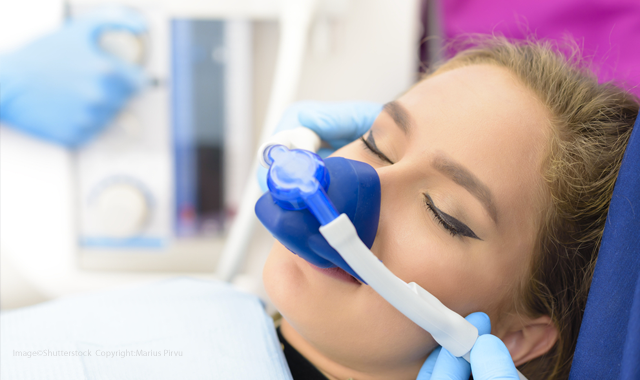Study finds office-based dental anesthesia is on the rise
Researchers discovered a surprising trend in where dental anesthesia is being performed.

Dentist anesthesiologists are a unique medical provider. Their training is related more closely to medical anesthesiologists than to dentists in that they do not receive clinical training in dental or oral surgery.
During their three-year residency program, dentist anesthesiologists receive most of their training in a hospital-based setting, performing a minimum of 800 cases of general anesthesia, of which at least 125 must be performed on children younger than seven years of age. However, very little is known about the post-residency practice characteristics of dentist anesthesiologists.
Trending article: How to make anesthesia less of a pain

Researchers from the Indiana University School of Dentistry in Indianapolis, Brigham and Women’s Hospital in Boston, and the University of California at San Diego recently published a study in the current issue of Anesthesia Progress that examines the procedural differences between dentist and physician anesthesiologists. Using two main dental databases, the National Anesthesia Clinical Outcomes Registry (NACOR) and the Society for Ambulatory Anesthesia Clinical Outcomes Registry (SCOR), for dental and oral surgery procedures, the researchers compared 7,133 office-based procedures performed by dentist anesthesiologists with 106,420 in-hospital procedures provided by physician anesthesiologists.
The information from the SCOR database focused on office-based settings, while NACOR included hospital-based. The data showed that in both groups children six years and younger were the predominant recipients receiving anesthetic dental treatment (two-thirds of NACOR patients; three-fourths of SCOR patients); however, the average age for SCOR was approximately nine years and for NACOR approximately 12 years. The researchers also found a 46 percent longer surgical time for the cases from the NACOR database versus those from the SCOR. Both databases noted that early childhood caries (tooth decay) was the main diagnosis for the dental procedures needing anesthesia.
Emerging research: Is this newer anesthetic injection technique better for patients?
In reviewing the data, the researchers found a clear correlation between early childhood caries and the need for anesthesia during dental procedures. Given that this is the most common disease among children six years and younger, with more than 4.5 million cases developing each year, pediatric dentists need dentist anesthesiologists. The researchers also found that the overall cost of pediatric dental procedures with anesthesia performed in a hospital-based setting has increased between three and four times than that of 20 years ago. Currently, an 84-percent cost savings is found when anesthesia is administered in an office-based setting.
Overall, there is a consistent trend with more dental anesthetic procedures being performed in an office-based setting, particularly for pediatric dentistry. The researchers have found that, “The anesthesia care provided by dentist anesthesiologists is also separate and distinct from anesthesia provided by oral and maxillofacial surgeons. Oral surgeons are the only other dentists who can legally administer general anesthesia; however, they receive approximately six months of general anesthesia training. Dentist anesthesiologists provide care to younger patients for procedures of longer duration using an independent anesthesia provider model versus oral and maxillofacial surgeons who use the operator-anesthesia model for shorter procedures on older patients.”
Trending article: Which type of sedative is best for pediatric dental procedures?
More research in this field is necessary because the data collected from the SCOR and NACOR are fairly limited as to the amount of information that is collected from providers on a volunteer level. The researchers concluded that despite the limitations on data collection, they are confident that, “Office-based anesthesia rendered by dentist anesthesiologists is clearly a unique and efficient mode of anesthesia care for dentistry.” They also believe that the increasing trend in office-based procedures with dentist anesthesiologists will continue.
Full text of the article, “Comparison of Anesthesia for Dental/Oral Surgery by Office-based Dentist Anesthesiologists versus Operating Room-based Physician Anesthesiologists,” Anesthesia Progress, Vol. 64, No. 4, 2017, is now available.
Floss & Flip Flops Episode 14: Children's Dental Health Month with Irene Iancu
February 1st 2023The Sanders Sisters invite Irene Iancu, RDH onto the microphone to discuss Children's Dental Health Month, discussing the importance of prevention, counseling and patient-centered care for our pediatric patient population.
University of Texas Health Science Center San Antonio to Launch Center for Regenerative Sciences
June 17th 2024The center aims to translate preclinical discoveries into therapies for dental and craniofacial diseases, leveraging the school’s expertise in stem cell-based treatments and 3D printing technologies.
America’s ToothFairy Partners with Sun Life and DentaQuest
June 17th 2024America’s ToothFairy, Sun Life, and DentaQuest are raising awareness about oral health disparities and promoting dental careers during Oral Health Month in June, providing free educational resources through the Share Your Smile campaign.